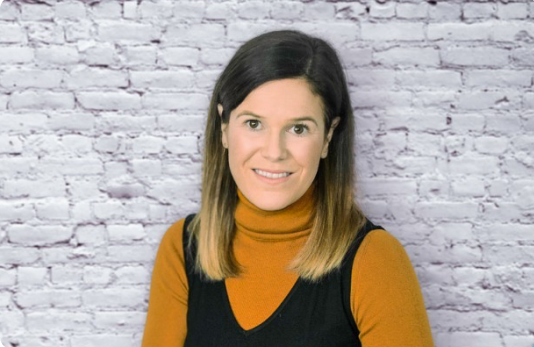Contents
How to evolve your change leadership mindset
One of the main conclusions from these conversations has been the need for everyone – regardless of function or seniority – to see themselves as a change leader. Recent challenges have flattened out organisational hierarchy and created a more level playing field for idea generation and decision-making during change. There’s been evidence of increased leadership humility. Change success now requires greater cross-company collaboration and boundary-spanning partnerships.
With this realisation comes the need to understand how best to encourage and develop a culture of change leadership across organisations. We believe that a crucial starting point is creating awareness of and adopting an individual and collective change leadership mindset. Our mindset determines how we think and feel about our role in change and informs the consequent behaviours and actions we take. Rather than seeing change leadership as a ‘skill’ that must be developed in a textbook style fashion, we’ve been working with leaders to explore how the ‘mindset’ we adopt every day can positively influence our approach.
The uncertainty we’ve faced in recent months has already required a shift in mindset for many of us, and so we need to ensure that new ways of thinking that have demonstrated a positive impact are not lost. It’s also a good time to consider how to evolve our leadership mindset further in readiness for continued change ahead, encouraging those around us to do the same.
We have captured key themes from our discussions to share back some of the universal challenges and opportunities facing change leaders today. We’ve also summarised a few of the practical strategies, rooted in psychology and an understanding of human behaviour, that we’ve explored in recent sessions.
Here’s a quick snapshot of the key themes and discussions we’ve had:
Making time for quality change leadership thinking
Effective change leaders need to be continuously mindful by tuning in to their current context and observing how real-time information from the wider internal and external environment is influencing the need for change. You can’t react to change if you can’t see it. And you can’t see change if you’ve got tunnel vision towards the way things have always been done.
Making time for quality change leadership thinking gives us greater clarity free from assumptions and bias. As a result, we’re more likely to identify the real change challenges and opportunities, and spot alternative ways to solve problems, rather than jumping too quickly to solutions mode.
The challenge however is that when faced with uncertainty, we often default to the familiar to gain a sense of comfort and control. We may also feel the pressure to act quickly and give immediate answers, especially when times are tough. So, as change leaders we must consciously create the head space for quality change leadership thinking to ensure that we’re not just reacting to change but also anticipating and preparing for what’s yet to come. We must also continue to seek input and ideas from multiple channels. Allowing time for regular reflection is an important part of this.
Adopting a mental nimbleness when leading change
Many of the leaders we spoke to in our sessions talked about the adaptability and flexibility they and their teams have shown in recent months. The new challenges that businesses faced from March acted as a catalyst for greater experimentation.
Having seen the benefits of taking a more agile response during uncertainty, there’s now an opportunity to develop a mental nimbleness across businesses that also encourages greater proactivity when leading change. To achieve this, we firstly must accept that there will always be multiple valid ideas and solutions to a problem, and that we may need to pivot our thinking in different directions to find the bigger, better idea. It also requires a willingness to move away from our own ideas, or the way things have always been done, if this is no longer serving its purpose. Adopting this mindset gives a greater sense of control during times of uncertainty and helps to drive change forward with clarity and direction. Making curiosity part of our everyday thinking is key to developing this individual and collective change leadership mindset.
Using optimism as a strategy for change leadership
Optimism is an attribute we heard mentioned many times in recent sessions. When we unpacked this further, we looked beyond optimism as being ‘glass half full’ or ‘Pollyanna positive’ – which isn’t helpful when we’re trying to connect with people during the emotional anxieties of uncertainty. Instead, we explored optimism as a strategy for dealing with difficulties and sensing opportunities throughout change.
This included demonstrating characteristics of optimism such as being visionary and innovative as a way of remaining future-focused during times of uncertainty, as well as using constructive communication to provide confidence and clarity of direction. We also talked about the importance of having resilience, positive challenge and persistence, in combination with attributes such as empathy, when addressing business challenges and overcoming roadblocks along the way. Encouraging greater emotional intelligence across businesses will support this wider mindset development.
Universal Change Leadership
There’s an equation taken from neuroscience that neatly summarises the way in which human thinking evolves:
Exposure + Repetition + Application = Transformational Change.
In other words, shifting our mindset isn’t something that happens overnight. We need to repeat and apply to change our thinking patterns and behaviours over time. And we must continuously challenge the gravitational pull of our comfort zone as it attempts to bring us back towards what’s most familiar.
Our Universal Change Leadership programmes offer a valuable opportunity to step back from daily pressures and positively challenge current thinking habits and behaviours to become a confident and capable change leader. We encourage leaders to move beyond their comfort zone throughout our programmes, continually stretching and positively challenging thinking so that those comfort zones grow a little at a time. With a specific focus given to the application of fresh insights to current change leadership challenges, leaders will feel continually energised to address the unique demands that arise when leading change.
Learn more about our highly practical and interactive 1:1 and group programmes on the ChangingPoint website or get in touch to have a chat about our approach: jayne@changing-point.com.

Written by Jayne Ruff
Jayne Ruff, Occupational Psychologist & Managing Director at ChangingPoint. To find out more about how ChangingPoint can help you align minds to transform your business, get in touch.
From the blog

Blog How Leaders Can Create Psychological Safety at Work
While many discussions about safety in the workplace are rightfully centred around physical health and safety, they should be expanded to cover psychological safety at work too.
Read more
Blog Strife or Thrive? 7 Most Common Challenges in Family Businesses
Take a closer look at how tradition, innovation, and change intersect within a family business context.
Read more
Blog The Glass Cliff: A Perilous Path for Women in Leadership
Learn what the glass cliff is, how it affects women’s leadership positions, and what we can do together to create more inclusive workspaces.
Read more






